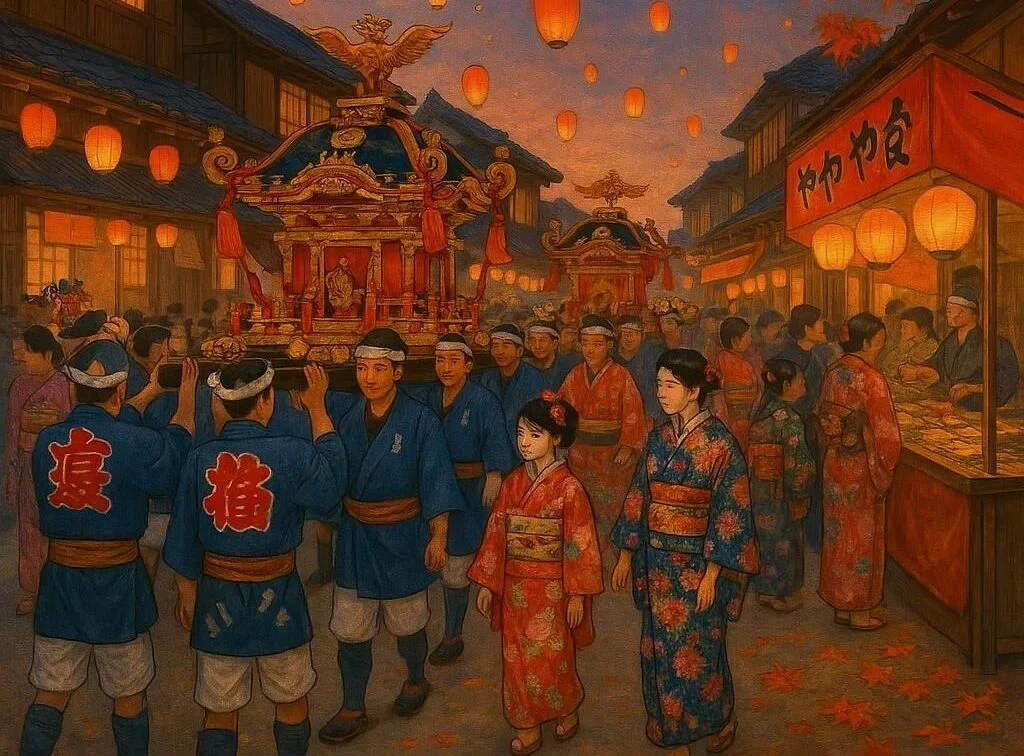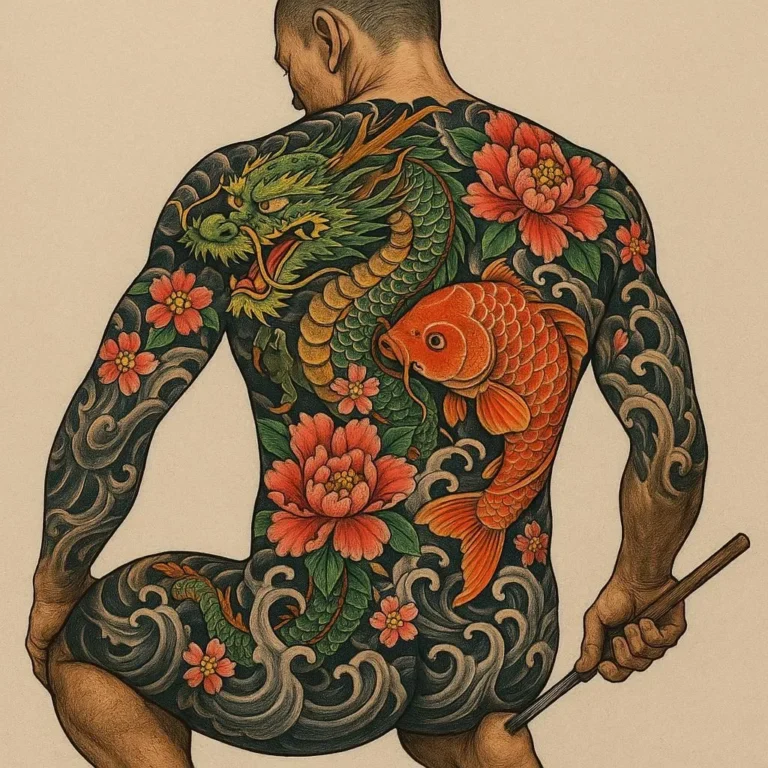504 views Celebrating the Seasons: Japanese Festivals and Rituals
Exploring the Vibrant World of Japanese Festivals and Rituals
Japan is a country steeped in tradition and culture, where the changing of the seasons is celebrated with vibrant festivals and rituals that showcase its rich heritage. From the delicate cherry blossoms of spring to the golden hues of autumn, each season brings its own unique festivities. These events are not just occasions for celebration but are deeply rooted in history, spirituality, and community bonding. In this blog post, we’ll delve into the fascinating world of Japanese festivals and rituals, highlighting their cultural significance and the ways they honor the seasons.
The Significance of Seasons in Japanese Culture
The four seasons (, shiki) hold a special place in Japanese culture, influencing art, literature, cuisine, and spirituality. The cyclical nature of the seasons is a metaphor for life itself, symbolizing birth, growth, decay, and renewal. This philosophy is deeply rooted in Buddhism and Shintoism, the two predominant religions in Japan.
The Role of Festivals and Rituals
Festivals, or (matsuri), are an integral part of Japanese life. They are often held to honor the gods (kami), pray for good harvests, and celebrate the changing seasons. These events are vibrant and colorful, featuring parades, dances, music, and traditional foods. Rituals, on the other hand, are more solemn, often performed at shrines and temples to seek divine favor or to mark important life events.
Spring Festivals and Rituals
Spring (, haru) is a time of renewal and new beginnings in Japan. It’s when the famous cherry blossoms (, sakura) bloom, drawing millions of people to parks and temples for hanami (flower viewing). This season is also marked by several significant festivals.
New Year (, Oshogatsu)
While technically occurring in winter, the New Year (, Oshogatsu) celebrations spill into spring. Families visit shrines and temples during the first few days of January to pray for good fortune, health, and happiness. This period is known as (hatsumode), the first shrine visit of the year.
Cherry Blossom Festival (, Hanami)
One of Japan’s most iconic spring events, hanami, is the act of enjoying the beauty of cherry blossoms. Parks, temples, and shrines host festivities with food stalls, games, and performances. Ueno Park in Tokyo and Maruyama Park in Kyoto are famous spots for hanami.
Buddha’s Birthday (, Hanamatsuri)
On April 8th, Buddhists celebrate the birth of Siddhartha Gautama. Temples across Japan hold ceremonies where statues of the Buddha are bathed in sweet tea (, amacha) as part of the ritual. This festival is also known as (Hanamatsuri) or the Flower Festival.
Summer Festivals and Rituals
Summer (, natsu) is a time of vibrant energy in Japan, with numerous festivals taking place under the hot sun. These events often feature fireworks, traditional dances, and cool treats to beat the heat.
Star Festival (, Tanabata)
Held on July 7th, Tanabata is based on a legend about two star-crossed lovers separated by the Milky Way. People write wishes on colorful strips of paper and hang them on bamboo trees. Major celebrations take place in cities like Sendai and Hiratsuka, where millions of visitors enjoy parades, fireworks, and food stalls.
Obon Festival (, Bon)
observed in mid-August, Obon is a Buddhist holiday to honor the spirits of one’s ancestors. Families clean their ancestors’ graves, light lanterns to guide the spirits home, and perform the Bon dance (, Bon Odori). This ritual is a beautiful expression of familial bonds and respect for the deceased.
Fireworks Festivals (, Hanabi Taikai)
Fireworks, or (hanabi), are a quintessential part of summer in Japan. Cities host elaborate fireworks displays along rivers and bays. The Sumida River Fireworks in Tokyo and the Gion Matsuri in Kyoto are two of the most famous events.
Autumn Festivals and Rituals
Autumn (, aki) brings a palette of golden, orange, and red hues to Japan, with cooler temperatures and an abundance of harvests. This season is celebrated with gratitude and reflection.
Moon Viewing (, Tsukimi)
Held around the mid-autumn moon, tsukimi is a ritual where people admire the full moon. Traditionally, people offer sweets shaped like the moon (, tsukimi dango) and sips of sake to the moon as part of the celebration. This practice is influenced by ancient Chinese culture.
Autumn Leaves (, Koyo)
While not a festival per se, the changing colors of the leaves in autumn are a major attraction. Temples and shrines as well as natural spots like Mount Koya and the Nikko National Park host light-up events (, illuminations) where the autumn foliage is illuminated at night.
Thanksgiving Festival (, Kinro Kansha no Hi)
Known as Labor Thanksgiving Day in Japan, this national holiday on November 23rd is an opportunity to express gratitude for work and harvests. It’s also a time for families to come together and enjoy traditional foods like rice, sake, and seasonal dishes.
Winter Festivals and Rituals
Winter (, fuyu) in Japan is a season of quiet reflection and cozy celebrations. Despite the cold, there are still numerous festivals and rituals that bring warmth and joy.
New Year Visits (, Oshogatsu)
While the New Year period begins in late December and continues into January, the winter season is marked by visits to shrines and temples, known as (hatsumode). These visits are a way to seek blessings for the coming year.
Sapporo Snow Festival (, Sapporo Yuki Matsuri)
Held in early February, the Sapporo Snow Festival is one of the most famous winter festivals in Japan. The event features elaborate snow and ice sculptures, live music, and delicious Hokkaido cuisine. Millions of visitors flock to Sapporo to witness this winter wonderland.
Setsubun (Bean-Throwing Festival)
On February 3rd or 4th, Setsubun marks the beginning of spring according to the lunar calendar. People throw soybeans to ward off evil spirits and eat (ehomaki) sushi rolls for good luck. This festival is often associated with the arrival of spring, although it occurs in winter.
The Cultural Significance of Japanese Festivals and Rituals
Japanese festivals and rituals are more than just colorful events; they are a window into the country’s deep-rooted traditions and spiritual practices. They reflect the Japanese values of community, respect for nature, and gratitude for life’s blessings. These events also serve as a way to pass down traditions to younger generations and strengthen cultural identity.
Conclusion
From the vibrant parades of summer to the serene moon-viewing rituals of autumn, Japanese festivals and rituals offer a glimpse into a culture that deeply appreciates the beauty of the seasons. Whether you’re interested in history, spirituality, or simply experiencing the local cuisine, these events provide a rich and unforgettable experience. If you ever have the chance to visit Japan during one of its seasonal festivals, it’s an opportunity you won’t want to miss.
Call-to-Action:
Is there a particular Japanese festival or ritual that piques your interest? Let us know in the comments below, and we’d be happy to share more about it!
Frequently Asked Questions (FAQ)
1. What is the most popular festival in Japan?
The most popular festival in Japan is the Gion Matsuri in Kyoto, held in July. It’s one of the oldest and most iconic festivals, featuring elaborate floats and traditional performances.
2. Can foreigners participate in Japanese festivals?
Absolutely! Many festivals are open to everyone, regardless of nationality. In fact, tourists are often welcome to join in the festivities, making these events a great way to immerse yourself in Japanese culture.
3. What should I wear to a Japanese festival?
It’s customary to dress modestly when visiting shrines or temples. However, for festivals, casual and comfortable clothing is fine. You might also want to wear traditional clothing like kimonos to fully immerse yourself in the experience.
4. Are Japanese festivals free to attend?
Most festivals are free and open to the public. However, some events may require a small fee for specific activities or to enter certain areas. Fireworks displays and large festivals may also have designated paid seating areas.
5. How can I find out about local festivals in Japan?
Local tourist information centers are a great resource for finding out about festivals in a specific area. Additionally, many festivals are listed online, and sites like Japan Guide and All About Japan provide comprehensive lists of events.







